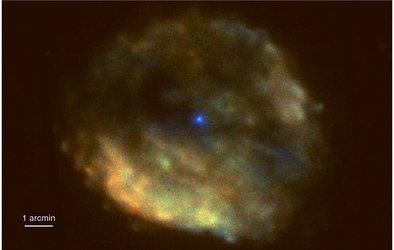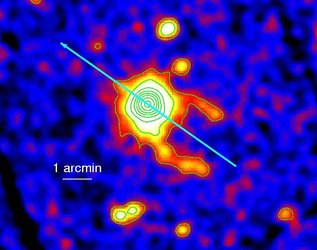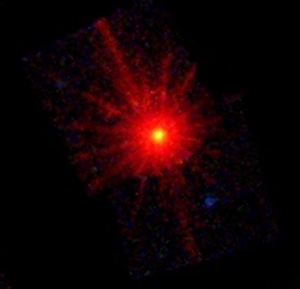

XMM-Newton view of RXJ1856
This X-ray image, obtained by the EPIC instrument on-board the ESA XMM-Newton observatory in October 2006 over a 19-hour observation session, shows the neutron star RXJ1856.
Using XMM-Newton’s data, scientists were able to find signs of the long-sought-after pulsations in RXJ1856, measuring a repeating 7-second pulsation (this corresponds to the rate at which the object rotates).
This neutron star is a key object in the study of its stellar category: it provides the second most perfect blackbody spectrum in the Universe, its distance and proper motion are measured, and the pulsations have the smallest pulsed fraction ever seen in an isolated neutron star. Until XMM-Newton’s measurements, the knowledge of the rotation period was a missing key ingredient for the understanding of how these objects behave. The results were possible only thanks to the large collecting area of the EPIC instrument.





